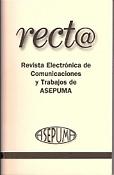Análisis de las subpoblaciones Arope en la Unión Europea en tiempos de crisis
DOI:
https://doi.org/10.24310/recta.19.2.2018.19907Keywords:
Crisis económica, exclusión social, Europa 2020, privación, tasa AROPEAbstract
This paper analyses the main sociodemographic characteristics of people in social exclusion during the economic crisis in the European Union; paying particular attention to the Spanish case. To identify this population, we focus on those who are in a clear situation of social exclusion, bringing together those who simultaneously have problems of monetary poverty, material deprivation and low work intensity, which are the three components of the European Indicator of Risk of Social Exclusion (AROPE). It also examines the dynamics of European social spending and the degree to which the objective of reducing the population at risk by 2020 has been met. In the recent years, the population at risk of poverty, severely materially deprived and living in a household with low work intensity has been more increased than the total AROPE population. Likewise, it has been extended more in the richer countries of the European Union and, especially, in Spain. Men, the unemployed, children and non-EU foreigners have a higher relative risk of belonging to this group. Furthermore, we can draw some guidelines for social policy in order to pursue the objective set in the Europe 2020 Strategy.
Downloads
Publication Facts
Reviewer profiles N/A
Author statements
Indexed in
-
—
- Academic society
- N/A
- Publisher
- UMA Editorial. Universidad de Málaga
Downloads
Published
How to Cite
Issue
Section
License

This work is licensed under a Creative Commons Attribution-NonCommercial 4.0 International License.









